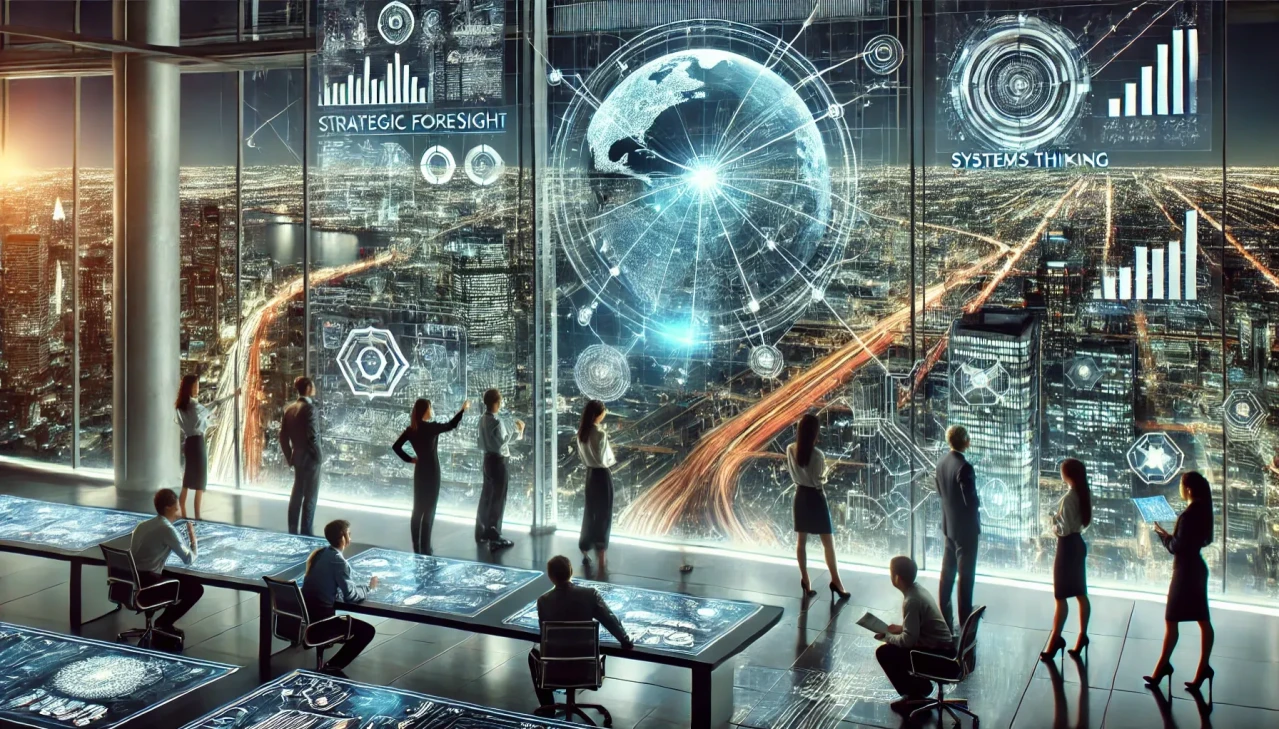
Future-Centric Mindset Shifts: Strategic Foresight and Systems Thinking to Improve Micro- to Macro-Level Outcomes in the 2020s and 2030s
What if the future of leadership wasn’t about predicting what’s next—but about creating it? In a world unraveling from complexity, uncertainty, and rapid disruption, one truth is emerging: the leaders who thrive aren’t just strategic—they’re foresightful. This bold research explores how Christian leaders can harness the power of systems thinking and strategic foresight to not only navigate chaos, but to advance human flourishing on a global scale. Whether you're a visionary, changemaker, or faith-driven professional, this piece will challenge you to reimagine your role—not just as a responder to the future, but as a redemptive architect of it.
Author: Dr. Aria Jones Initial Publication: 2023 Regent Research Roundtables Proceedings
Abstract
This paper explores the topic of strategic foresight and how its application can enable crucial future-centric mindset shifts across micro- and macro-levels. Strategic foresight is defined as the ability to anticipate potential futures and their implications through techniques like horizon scanning and scenario planning. Strategic foresight’s history and growing importance, emphasizing systems thinking, is discussed. Individual, team, organizational, and macro-level mindset shifts required to thrive in today’s volatile, uncertain, complex, and ambiguous (VUCA) environments are observed. At the personal level, shifting from reactive to proactive perspectives and linear to dynamic thinking is covered. Moving from siloed actions to collaborative solutions is addressed for teams and departments. Organizations must transition from short-term reactivity to long-term proactivity, from knowing to learning. Macro-level perspectives require considering interconnected challenges rather than single issues. The interrelatedness and interdependencies from micro- to macro-levels are illuminated. Two key strategic foresight tools—the futures wheel and causal loop diagrams (CLDs)—are presented at a high level as easy-to-use methods to enact strategic foresight. The futures wheel allows branching out implications of ideas, while CLDs illustrate feedback relationships. The paper concludes with actionable takeaways centered around practicing systems thinking, thinking the unthinkable, anticipating disruptions using strategic foresight methods and tools, and sharing strategic foresight broadly. Overall, the research argues that strategic foresight cultivates crucial future-centric mindsets and enhances future readiness, which can significantly improve outcomes when applied across micro- to macro-levels, especially in today’s VUCA world.
Citation (APA 7th Edition format):
Jones, A. (2023). Future‑centric mindset shifts: Strategic foresight and systems thinking to improve micro‑ to macro‑level outcomes in the 2020s and 2030s. In Regent Research Roundtables Proceedings (pp. 342–361). Regent University School of Business & Leadership. https://www.regent.edu/wp-content/uploads/2023/01/Regent-Research-Roundtables-2023-Strategic-Foresight-Jones.pdf
